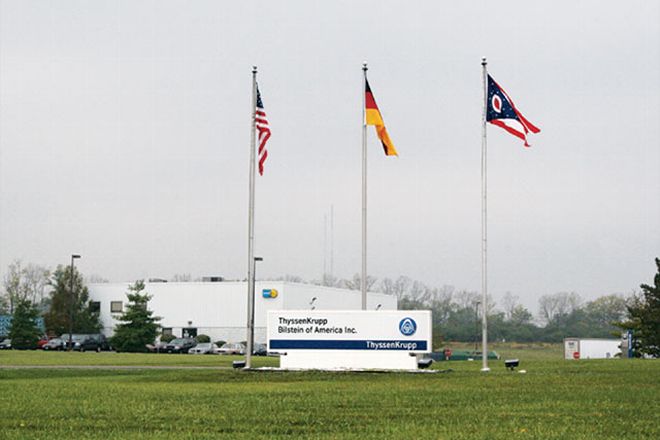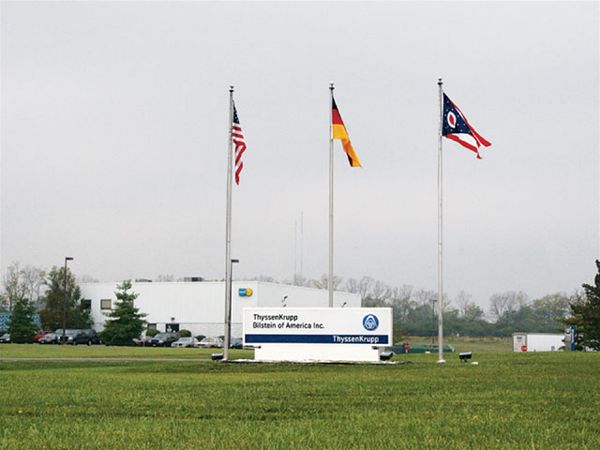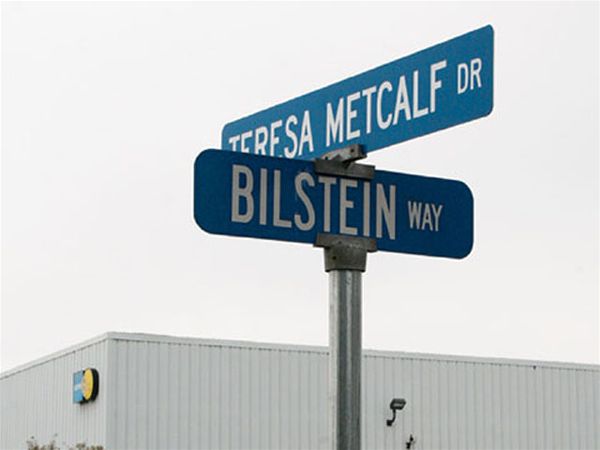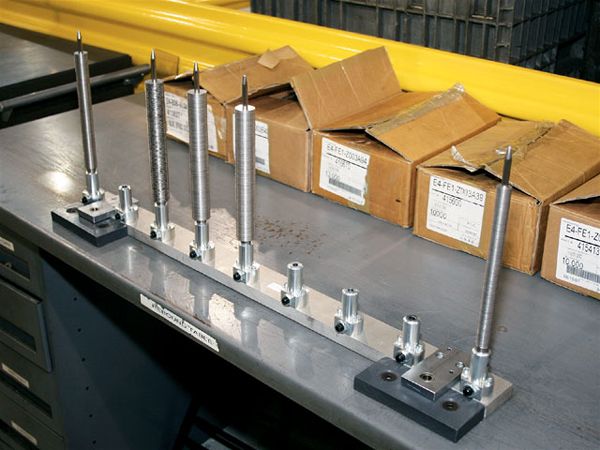
 This is the Bilstein Hamilton manufacturing facility. Nestled in the rolling hills just outside of Cincinnati, this plant produces a majority of the OE shock applications you find on brands such as Mercedes, Chrysler, Nissan, and Chevy. Bilstein also caters to the high-performance supercar category. With output of nearly 8,000 shocks per day, this facility is a swarm of activity 14 hours a day.
This is the Bilstein Hamilton manufacturing facility. Nestled in the rolling hills just outside of Cincinnati, this plant produces a majority of the OE shock applications you find on brands such as Mercedes, Chrysler, Nissan, and Chevy. Bilstein also caters to the high-performance supercar category. With output of nearly 8,000 shocks per day, this facility is a swarm of activity 14 hours a day.
Over the last 5 decades, the German-owned ThyssenKrupp Corporation has built a trusted name in automotive product technology. It all started back in 1873 when a German entrepreneur named August Bilstein began a small window hardware manufacturing business to meet the demands of the ever-expanding industrialized world. August's son Hans Bilstein took over the company in 1919 and was responsible for its swift growth and diversification. Using plating technology developed in the United States, Bilstein initiated a foundry which eventually evolved into Europe's first large-scale supplier of chrome-plated car bumpers. As the company grew, so did its product portfolio. From elevators to car jacks, Bilstein became a mainstay. August Bilstein's approach was simple really; build the very best product available. He conducted production based on utmost attention to detail. Then in 1954, Bilstein made the decision to enter the automotive shock absorber business. He perfected a new design and kept up with demands of prestigious OE manufacturers such as Daimler-Benz. Over the following 12 years Bilstein established 16 worldwide patents on gas-pressurized shock absorbers. At the same time, Americans were raiding the deserts, discovering the pleasures of recreational off-highway motoring as well as competitive desert racing. At the time, Bilstein's Mercedes-Benz shock absorbers were the cream of the crop. Naturally, their use became well-known and it wasn't uncommon to see a Meyers Manx running around on OE Mercedes dampers. The famed Baja 1000 race eventually led to the formal presence of Bilstein in North America.

Today Bilstein employs nearly 200,000 people worldwide, realizing sales of more than $67 million annually. This large-scale presence doesn't just happen. It is the result of the meticulous procedure and protocol that is so often associated with German products. Recently we were invited to Bilstein's Cincinnati plant to go behind closed doors and see what goes into a Bilstein shock absorber. What we discovered was impressive. Although we can't show you a few of the critical steps due to confidentiality, let us assure you that August Bilstein's original concept of "product perfection" radiated in every aspect of the facility. Some 200 quality assurance procedures ensure each and every part of a Bilstein shock will perform flawlessly. In our opinion, it was almost silly to see such an obsessive approach to manufacturing. But hey, who are we to judge a company with more than 15 locations worldwide and net sales in the billion-dollar range? Check out some of the cool stuff we got to feast our eyes on inside the plant.

7. The next step is putting together the piston and valve stack on the piston rod. This picture shows a cassette that is being assembled by factory workers. Each cassette holds thousands of thin metal discs that make up the valving of a shock. There are literally millions of possible valve profiles for thousands of shock combinations. These are all programmed into a computerized assembly tool. The machine takes each cassette and using vacuum, pneumatic, and hydraulic power, selects the discs necessary for a given shock model and assembles them on the piston rod along with the piston. Next, each rod assembly is dyno-tested on a "VDA" tool, which essentially simulates a shock body full of oil. Each rod assembly is plunged several times robotically into the oil at speed, and measurements automatically calculate whether or not the valve stack is within design intention or not. We couldn't photograph this process because of proprietary interests, but we watched as rod after rod cycled rapidly through the machine. It was like something out of a science fiction book: robotic arms going to town, moving parts all around as a large spinning cam mounted overhead transferred power from a huge electric motor through something that almost resembled the drive system of a 19th century steam locomotive. Just the sight of this incredible machine in action was enough to bring out the inner child again.
We had the opportunity to spend some time with Daryl Bays, a validation and development engineer for Bilstein's OE shock division. Daryl spends his time working on future cars and trucks in Detroit and other areas where future vehicles are track tested. His job requires a thorough understanding of chassis dynamics. He is directly responsible for final shock tuning on vehicles such as the Dodge Power Wagon, Viper SRT10, and SRT8 Grand Cherokee. He has a plethora of experience driving concept vehicles that may or may not ever see production. We caught up with Daryl after the tour and had a chance to quiz him on OE proving grounds, future suspension concepts, vehicles he tested, and other unique driving experiences. Despite some pretty cool opportunities that come along in the magazine business, we couldn't help but feel slightly envious of Daryl's position. Who else gets to flog supercars and pick apart ride characteristics behind closed doors each day?










